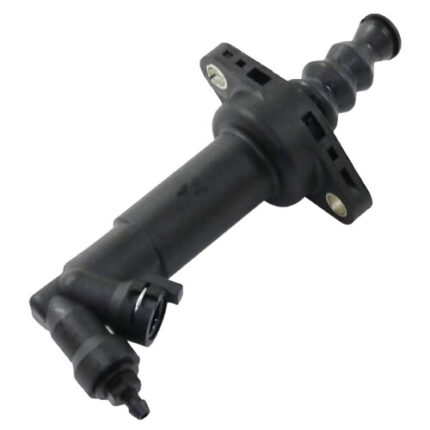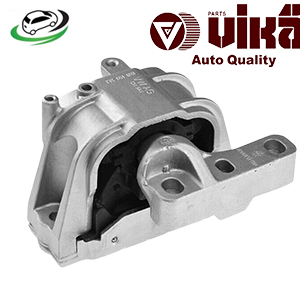-10%
Get Audi Q7 3.0T A/C Pressure Switch 1J0959126 in Kenya
The A/C pressure switch, also known as the air conditioning pressure switch or refrigerant pressure switch, is a crucial component of a vehicle’s air conditioning (A/C) system. It plays a key role in ensuring the system operates efficiently and safely by monitoring the pressure of the refrigerant. Understanding its function, components, common issues, and maintenance is essential for keeping your vehicle’s A/C system in optimal working condition.
Function of the A/C Pressure Switch
The primary function of the A/C pressure switch is to monitor and regulate the pressure of the refrigerant in the A/C system. This pressure is critical for the proper operation of the A/C system, affecting cooling performance and preventing damage to components. The switch performs the following key functions:
- Pressure Monitoring: The A/C pressure switch continuously measures the pressure of the refrigerant within the system. It is typically located on the high-pressure side (high-pressure switch) or the low-pressure side (low-pressure switch) of the system, depending on its function.
- System Protection: The switch helps protect the A/C system from damage due to excessively high or low refrigerant pressure. If the pressure exceeds or falls below a predetermined threshold, the switch activates or deactivates the A/C compressor to prevent damage.
- Compressor Control: When the refrigerant pressure is within the acceptable range, the switch allows the A/C compressor to operate. If the pressure is too high or too low, the switch will cut power to the compressor to prevent overheating, compressor damage, or other issues.
- Safety Mechanism: The A/C pressure switch serves as a safety mechanism to ensure that the A/C system operates within safe pressure limits. This helps prevent potential failures and ensures the system functions effectively.
Components of the A/C Pressure Switch
The A/C pressure switch consists of several key components that work together to monitor and regulate refrigerant pressure:
- Sensor or Pressure Sensor: The sensor detects the pressure of the refrigerant and converts it into an electrical signal. This signal is used to determine whether the pressure is within the acceptable range.
- Switching Mechanism: The switching mechanism controls the flow of electrical current based on the pressure readings from the sensor. It activates or deactivates the A/C compressor as needed.
- Electrical Connector: The electrical connector provides the interface between the A/C pressure switch and the vehicle’s electrical system. It ensures a secure connection for transmitting the pressure signals.
- Pressure Port: The pressure port is the connection point where the pressure sensor measures the refrigerant pressure. It is usually connected to the refrigerant lines or a specific pressure line in the A/C system.
- Housing: The housing encloses the internal components of the A/C pressure switch. It is designed to withstand the harsh conditions of the A/C system, including high pressure and temperature fluctuations.
Importance of the A/C Pressure Switch
The A/C pressure switch is crucial for the following reasons:
- Optimal A/C Performance: By monitoring refrigerant pressure, the switch ensures that the A/C system operates efficiently, providing consistent cooling performance. Proper pressure levels are essential for effective heat exchange and cooling.
- Preventing System Damage: The switch helps protect the A/C system from damage caused by excessive or insufficient refrigerant pressure. It prevents issues such as compressor overheating, system leaks, and component failure.
- Energy Efficiency: A properly functioning A/C pressure switch contributes to the overall energy efficiency of the vehicle’s A/C system. It helps the system maintain optimal performance without overworking the compressor or other components.
- Comfort and Safety: Ensuring that the A/C system operates within safe pressure limits helps maintain comfort for the driver and passengers. It also prevents potential safety hazards associated with system failures or damage.
Common Issues with the A/C Pressure Switch
Despite its robustness, the A/C pressure switch can experience several issues over time. Common problems include:
- Faulty Readings: A malfunctioning pressure sensor may provide inaccurate readings, leading to improper activation or deactivation of the A/C compressor. This can result in inconsistent cooling performance or compressor damage.
- Leaks: Leaks in the pressure port or connections can cause a loss of refrigerant, leading to incorrect pressure readings and reduced A/C performance. Refrigerant leaks may also result in environmental concerns.
- Electrical Issues: Problems with the electrical connector or wiring can disrupt the signal transmission between the A/C pressure switch and the vehicle’s electrical system. This can cause erratic compressor operation or A/C system failure.
- Clogging or Contamination: Contamination or debris in the A/C system can affect the performance of the pressure switch, leading to improper pressure readings or switch malfunctions.
- Wear and Tear: Over time, the internal components of the pressure switch may wear out or become damaged, affecting its ability to function correctly.
Signs of a Failing A/C Pressure Switch
Recognizing the signs of a failing A/C pressure switch can help prevent further issues with the A/C system. Common symptoms include:
- Inconsistent Cooling: If the A/C system provides inconsistent or inadequate cooling, it may be due to a malfunctioning pressure switch affecting refrigerant flow.
- A/C Compressor Cycling: Frequent or erratic cycling of the A/C compressor, where it turns on and off intermittently, can indicate a problem with the pressure switch.
- A/C System Not Working: If the A/C system does not turn on at all or fails to engage, it could be due to a faulty pressure switch or an issue with its connections.
- Check A/C Light: Some vehicles have a warning light on the dashboard that indicates A/C system issues. If this light illuminates, it may signal a problem with the pressure switch.
- Unusual Noises: Unusual noises from the A/C compressor or system, such as squealing or grinding, can be a sign of a problem with the pressure switch or other related components.
Maintenance and Replacement of the A/C Pressure Switch
Proper maintenance and timely replacement of the A/C pressure switch are essential for ensuring the effective operation of the A/C system. Here are some tips:
- Regular Inspection: During routine vehicle maintenance, inspect the A/C pressure switch and its connections for signs of wear, damage, or leaks. Ensure that the electrical connector is secure and free from corrosion.
- Check Refrigerant Levels: Monitor the refrigerant levels in the A/C system. Low refrigerant levels can affect the pressure switch’s performance and may indicate a leak in the system.
- Proper Diagnosis: If you suspect an issue with the A/C pressure switch, use a diagnostic scanner or consult a professional mechanic to accurately diagnose the problem. A thorough diagnosis will help determine whether the pressure switch or another component is at fault.
- Replacement: If the A/C pressure switch is found to be faulty or malfunctioning, it should be replaced promptly. Follow the manufacturer’s guidelines for the replacement procedure, and ensure that the new switch is properly installed and calibrated.
- System Check: After replacing the A/C pressure switch, have the A/C system checked for proper operation. Verify that the refrigerant pressure is within the acceptable range and that the system is cooling effectively.
Follow us on Facebook for more parts.



